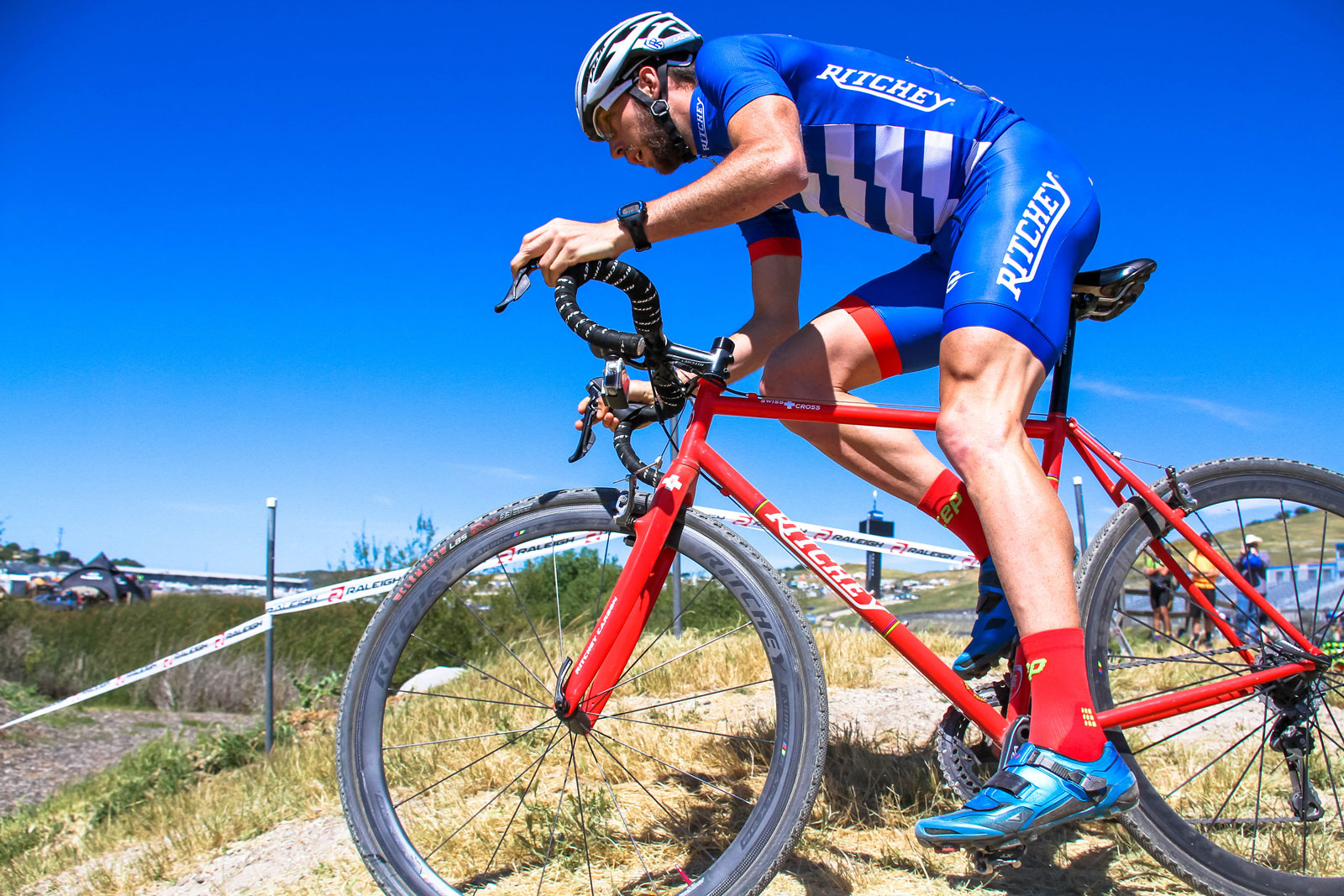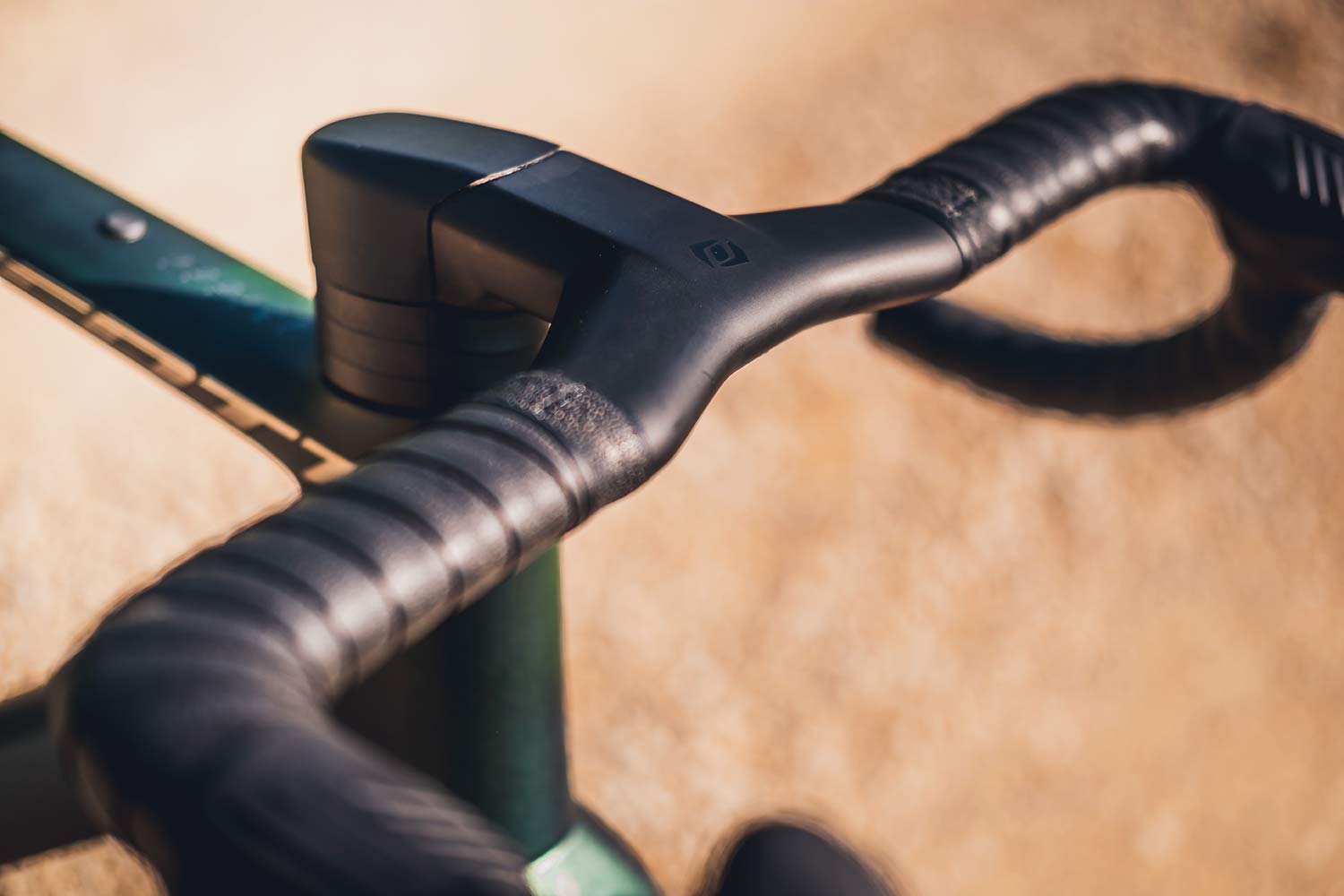We know, there’s no such thing as a stupid question. But there are some questions you might not want to ask your local shop or riding buddies. AASQ is our weekly series where we get to the bottom of your questions – serious or otherwise. Hit the link at the bottom of the post to submit your own question.
Welcome back to the Bikerumor Ask A Stupid Question series. This week, we’re tacking gravel bike geometry, and how wheelbase, stem length, and fork offset contribute to handling properties like stability and agility. Joining us this week are the following experts:
- Max Koenen, Gravel Bike Engineer at Scott
- Aaron Abrams, Product Director at Marin Bikes
- Ritchey; a collaborative effort from the team
- Dave Weagle, Frame Designer at Evil Bikes
Would a Gravel Bike with a short wheelbase, low trail but long stem behave similarly to a bike with a long wheelbase, high trail, and short stem? Does the length of the wheelbase and/or trail have the same impact on stability as the length of the stem? If not, which is more important for stability and how would I feel this difference during a ride?
Marin Bikes: In our experience, a longer wheelbase is always going to feel more stable than a shorter wheelbase, but head tube angle and stem length will still very much affect the steering feel. The two cases given (short wheelbase, low trail, long stem vs. long wheelbase, high trail, short stem) are exactly the differences between what we used to see on MTBs all the way to the 2010s, and what we’re seeing on MTBs now.
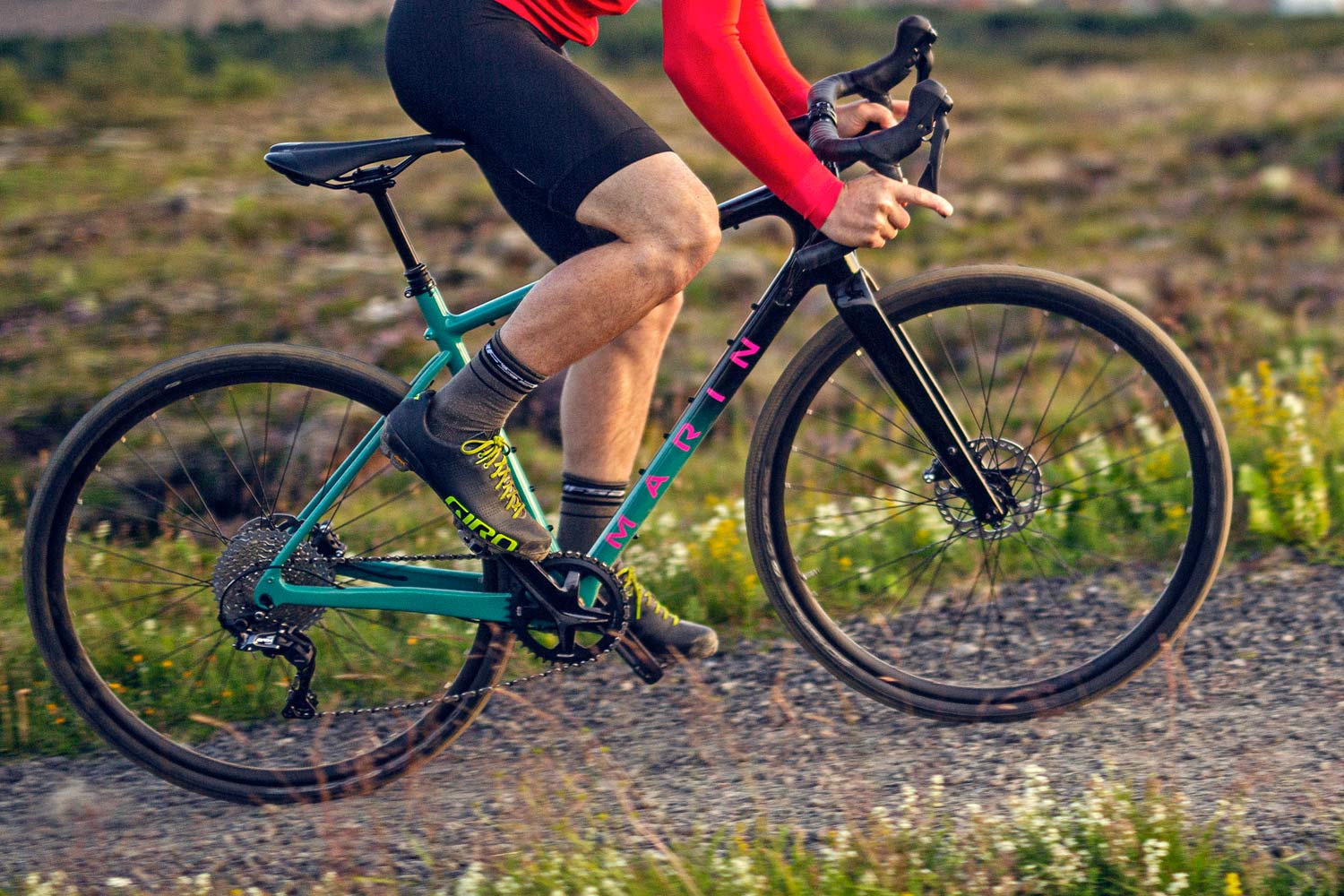
The benefits of the modern geometry are undeniable with handling, comfort, and safety on the bike at most speeds in most conditions, and this is the same on a gravel bike, albeit with less “extreme” geometry numbers than what’s being pushed in the Enduro MTB category.
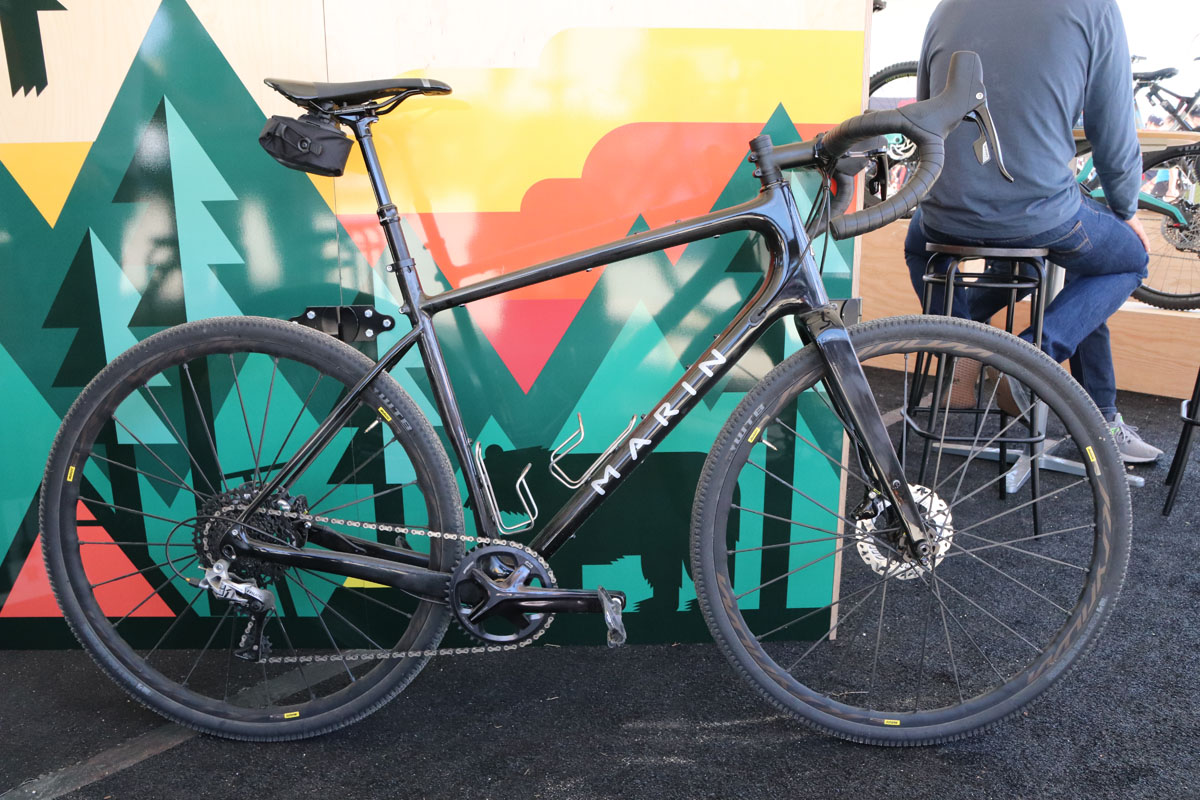
To summarize the feeling of the bike with a longer wheelbase, more slack head tube, and shorter stem (preferably with a wider handlebar too!), there is a less twitchy, more planted feel to the front end. The bike is still easy to steer, but the feeling that the front end would require so much effort and focus to keep pointed in the desired direction is pushed aside and allows the rider to focus more on what’s coming further down the path. That predictability means the rider can ride faster and still have the feeling of having more time to react to obstacles, and also feel more comfortable keeping the bike in the desired path when they’re tired.
Ritchey: In answer to your question, “Would a Gravel Bike with a short wheelbase, low trail but long stem behave similarly to a bike with a long wheelbase, high trail, and short stem?”, our answer is… These are two things that don’t really have anything to do with each other. So, no, these two bikes would not behave the same. The ride characteristics of longer chainstays cannot be replicated with a longer stem or even a low trail.

The first sounds like a cross bike. Most drop bar bikes with shorter wheelbases (like the Ritchey Road Logic and Swiss Cross) are designed with an optimal range of stem length in mind, usually 90-110mm. These bikes are meant to be agile and quick handling in tight, race-like scenarios, whereas gravel and off-road specific bikes, like the Ritchey Outback and Ascent are designed for a shorter stem, usually 70-90mm, and are meant for long, smooth travel over rough surfaces. Stem length and trail have to do with handling more than the ride quality of a longer chainstay.
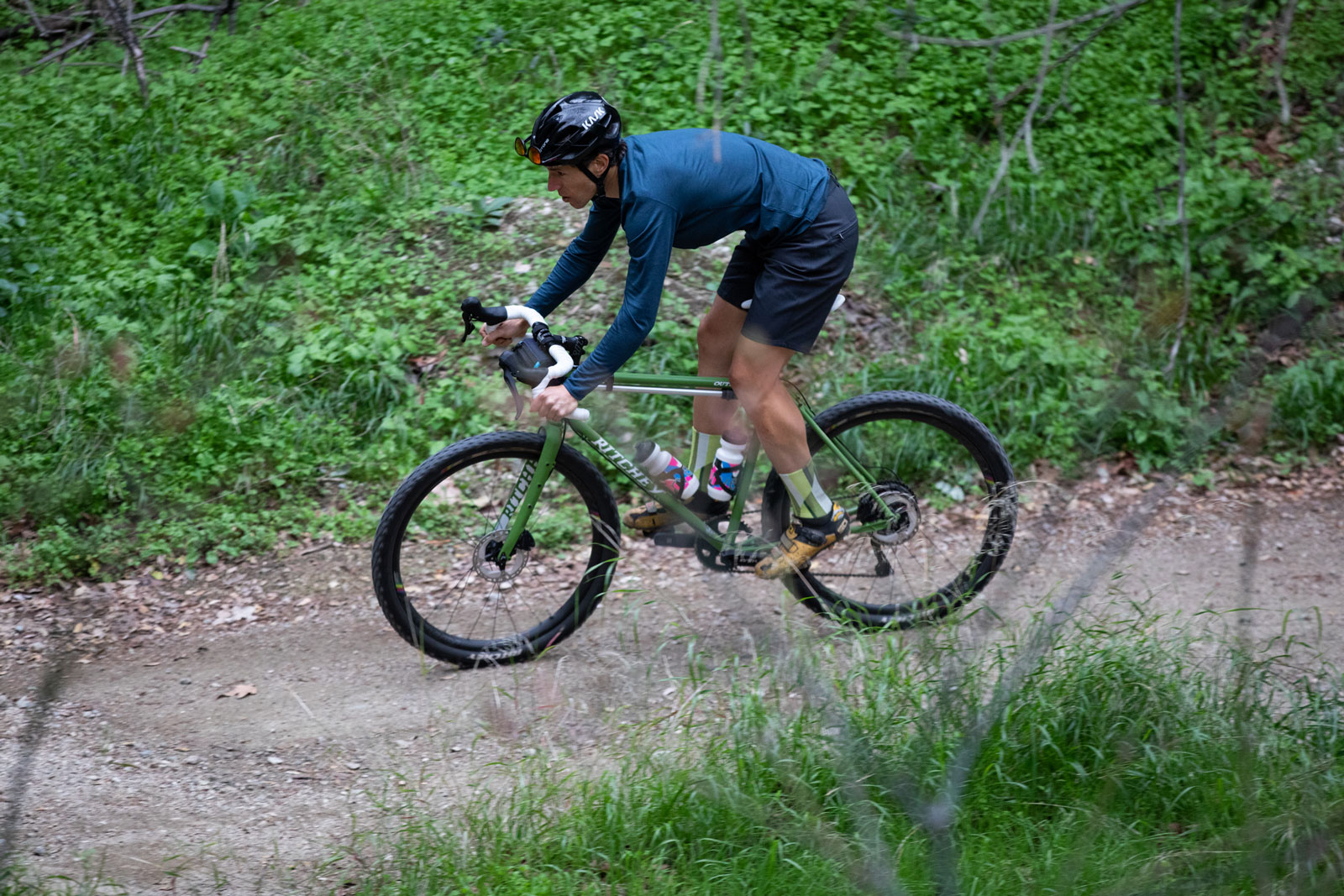
In answer to your question, “Does the length of the wheelbase and/or trail have the same impact on stability as the length of the stem?”, again, the answer is, No. The stability that comes with longer chainstays is built into the DNA of the frame. The way it feels going into, and coming out of, a turn would be different. A longer stem would slow down the reaction of the front of the bike, yes, but the way the whole bike stays stable in straight lines and in turns is defined by its wheelbase and chainstay length.
Which is more important for stability and how would I feel this difference during a ride? Well, a bike is more stable and reliable because of its built-in geometry. A longer or shorter stem will certainly dial in a fit, thereby adding some stability, but a longer stem is no match for a well-designed frame. There are elements of the bike that are individualized, such as stem length, trail, chainstay length, seat tube angle, etc. that are important to consider…but it’s most important to consider all of this as a whole.
This all makes the bike complete – how and what it was designed for and with what components that inform the ride quality. It’s silly to say only the chainstay makes a difference with the handling when it’s inherently tied into the trail of the front end, the length of the head tube, the length of the top tube, and even the choice of tires. This is why when we look at warranties, we want to see the whole bike and how it was used because that informs how something failed. Think of a bicycle as a spider web: you cannot tug on one string and not shake the entire structure.
Scott: In answer to your question, “Would a Gravel Bike with a short wheelbase, low trail but long stem behave similarly to a bike with a long wheelbase, high trail, and short stem?”, my answer is, No. This is because the wheelbase and trail influence the agility and steering characteristics of the bike while the stem length (and bar width) influence the translation of the rider’s input to the rotation of the front wheel.
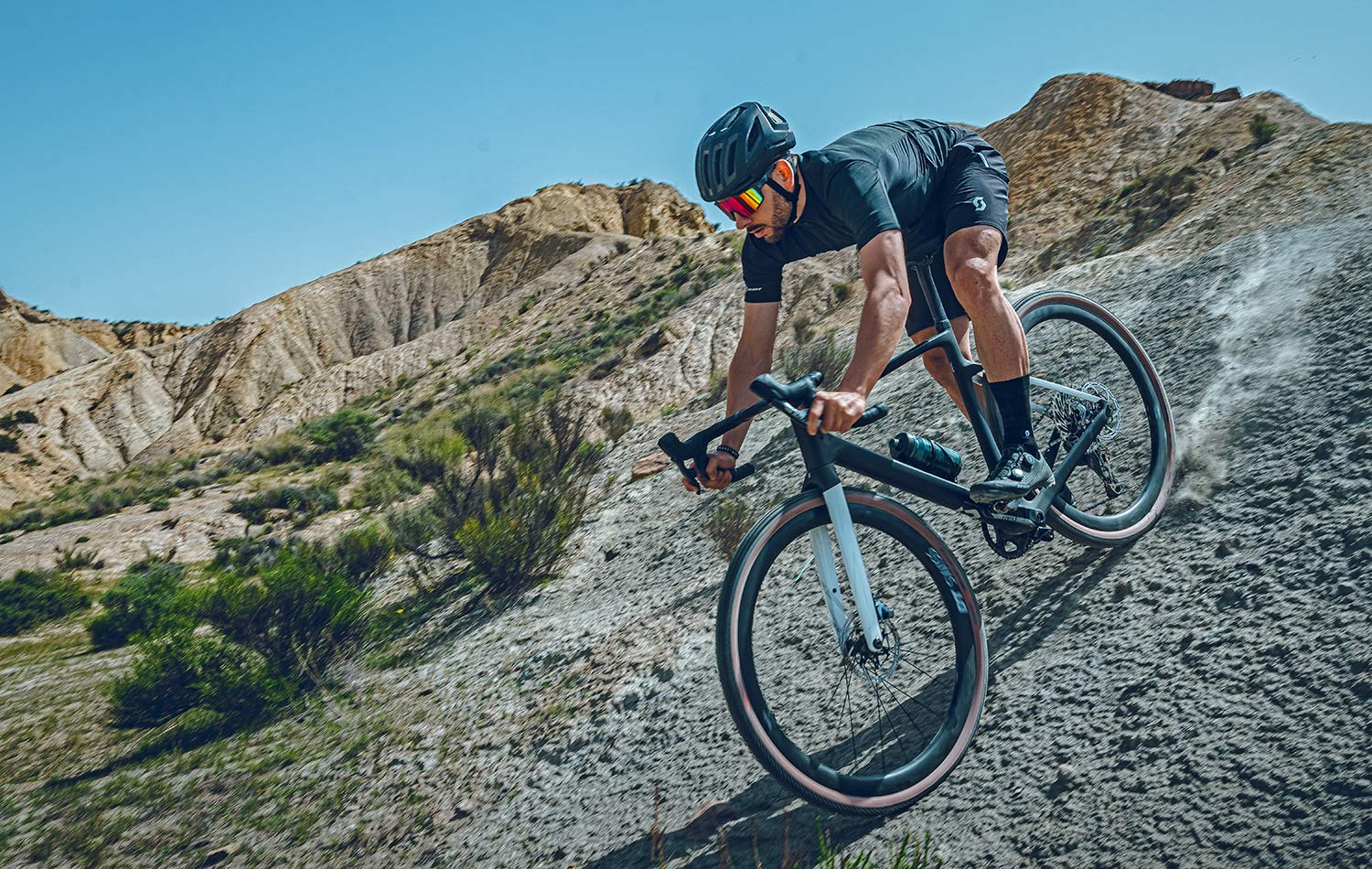
If you translate this to cars it might become more obvious: A long wheelbase and a small steering angle of the front wheels results in a very high turning radius of the vehicle. This is the characteristic of the chassis that you can’t compensate for by simply increasing the transmission ratio of your steering gearbox.
A frame geometry with a long trail and a long wheelbase will result in a rather sluggishly handling frame. Combining this with a shorter stem will only result in a harder-to-steer bike. As the leverage between the rider’s hands and the steering axis decreases, one needs to produce a much higher force to turn the bar.
In answer to the question, “Does the length of the wheelbase and/or trail have the same impact on stability as the length of the stem?”, again, my answer is, No. This is because the wheelbase and trail influence the agility/stability of the bike’s chassis while the length of the stem influences the leverage of the rider’s steering movements and so it acts as a transmission.
Imagine riding a bike with no hands just by leaning your body weight in the direction you want to go. A too stable frame geometry with a long wheelbase and trail will be harder to steer around corners while a geometry with a short wheelbase and short trail will be nervous and difficult to ride in a straight line. The stem length has almost zero influence on the steering characteristics once you take your hands off the bar.

Finally, in answer to the final question, “Which is more important for stability and how would I feel this difference during a ride?”, I would suggest the following.
The frame geometry is the most critical factor for the stability of a bike. You will feel this during your ride when you take your hands off the bar or when you ride in squally crosswinds and at higher speeds. On a bike with high directional stability, it will be easier to hold a straight line.
But, this stability comes to the detriment of agility. If a bike is too stable it will feel sluggish and hard to lean into corners. High-speed switchbacks or tight roundabouts may be challenging as well as quick directional changes. So, choosing the right geometry for a bike is always a trade-off between agility and stability.
Evil Bikes: For sure the combination of a longer wheelbase and high trail will feel radically different to a bike with a shorter wheelbase and low trail. The question of whether either wheelbase vs. stem length will impact stability more than the other is a pretty broad one and I think needs to be really considered situationally to start to get a handle on it. Breaking down the parts, a longer trail will require more steering torque to initiate and adjust cornering by steering; this adds to a feeling of stability as the forces at the wheel will impart more of a caster effect with more trail than less.
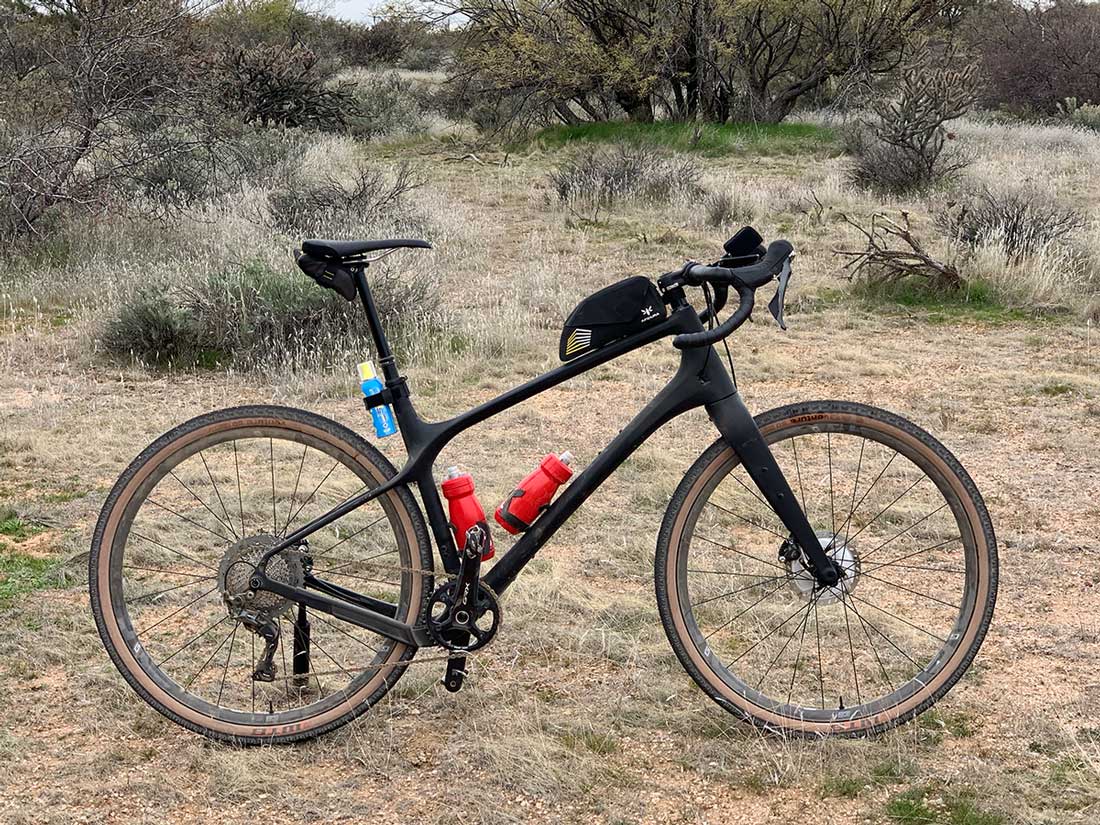
There are also some nuances to consider when hitting obstacles, wherewith more trail, a larger obstacle can be ridden over before the steering system can transition to a zero trail or negative trail state. Furthermore, fork offset can contribute to “flop factor” (also known as axle drop) where greater values can be beneficial for helping the rider balance at very slow speeds (track standing) and sometimes detrimental at higher speed steady-state cornering when the front wheel is sliding.
To get a grip on how wheelbases and stems factor in, it’s important to nail down a couple of facts. 1) Wheelbases are a combination of aligned chainstay length, aligned front center length, and BB drop. 2) One of the most if not the most critical component of “feeling” stability is center of gravity location (CG). 3) Saddle location and grip location will clearly define CG location when seated and drive body positioning when standing, cornering, or attempting more dynamic ride actions such as J-hopping, manualing, jumping, etc.
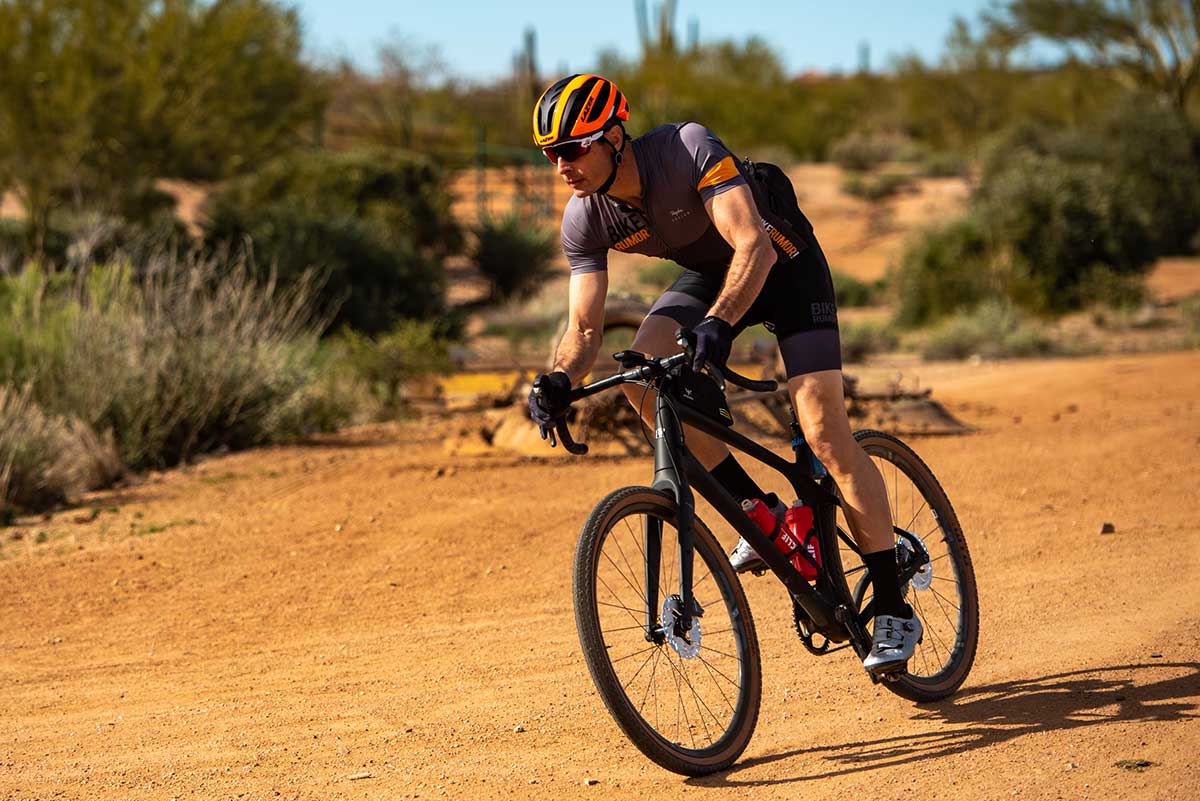
So, with that, let’s consider two extremes; climbing a steep grade and descending a steep grade. 4) Every person is sized differently, not all 50th percentile people have the same leg lengths, arm lengths, torso lengths, etc., so bike fit and therefore CG location are highly individual and not cookie-cutter in any way.
Consider two bikes with equal wheelbases, BB drop, and saddle fore-aft position (I disregard seat tube angle as a useful measurement and refuse to use it). The first has a longer chainstay, shorter front center, and longer stem. The second bike has a shorter chainstay, longer front center, and shorter stem. This first bike will carry more weight on its front wheel than the second bike, its CG is shifted forwards in relation to the contact patches. This will allow the rider on the first bike to climb steeper grades while seated without looping out, but when the riding situation changes to descending, now the bike with the more rearward weight distribution will allow the rider to center their weight between the wheels more easily. That right there is the reason why more rearward CG locations can impart a feeling of stability to riders in more aggressive riding situations.
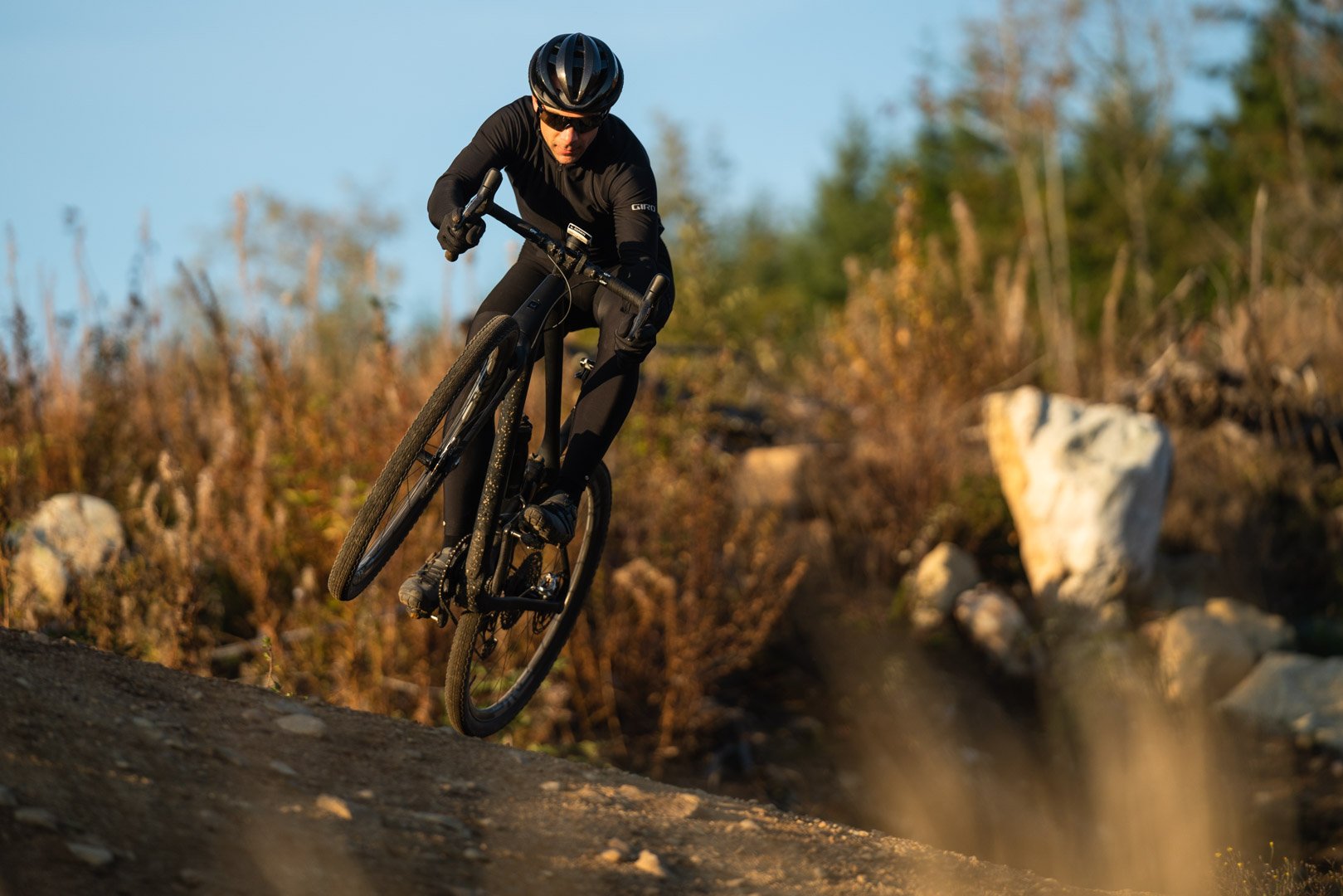
In the end, not every rider is built the same, rides the same, comes from the same riding background, or likes the same thing, and that’s cool. From my standpoint with the Chamois Hagar, I wanted to build a gravel bike for riders coming from the aggressive side of mountain biking. I pitched this bike to several of my partners and ultimately Evil took a flyer on it. Yes, when it debuted it was a serious outlier, and perhaps a bit ahead of its time, but for riders who want to push the limits on the skills side of gravel riding, it’s an impressive tool largely due to its combination of more rearward CG location and mountain bike level of mechanical trail. The future will tell us if gravel biking will head in this direction, so far it seems that way.
Got a question of your own? Click here to use the Ask A Stupid Question form to submit questions on any cycling-related topic of your choice, and we’ll get the experts to answer them for you!

